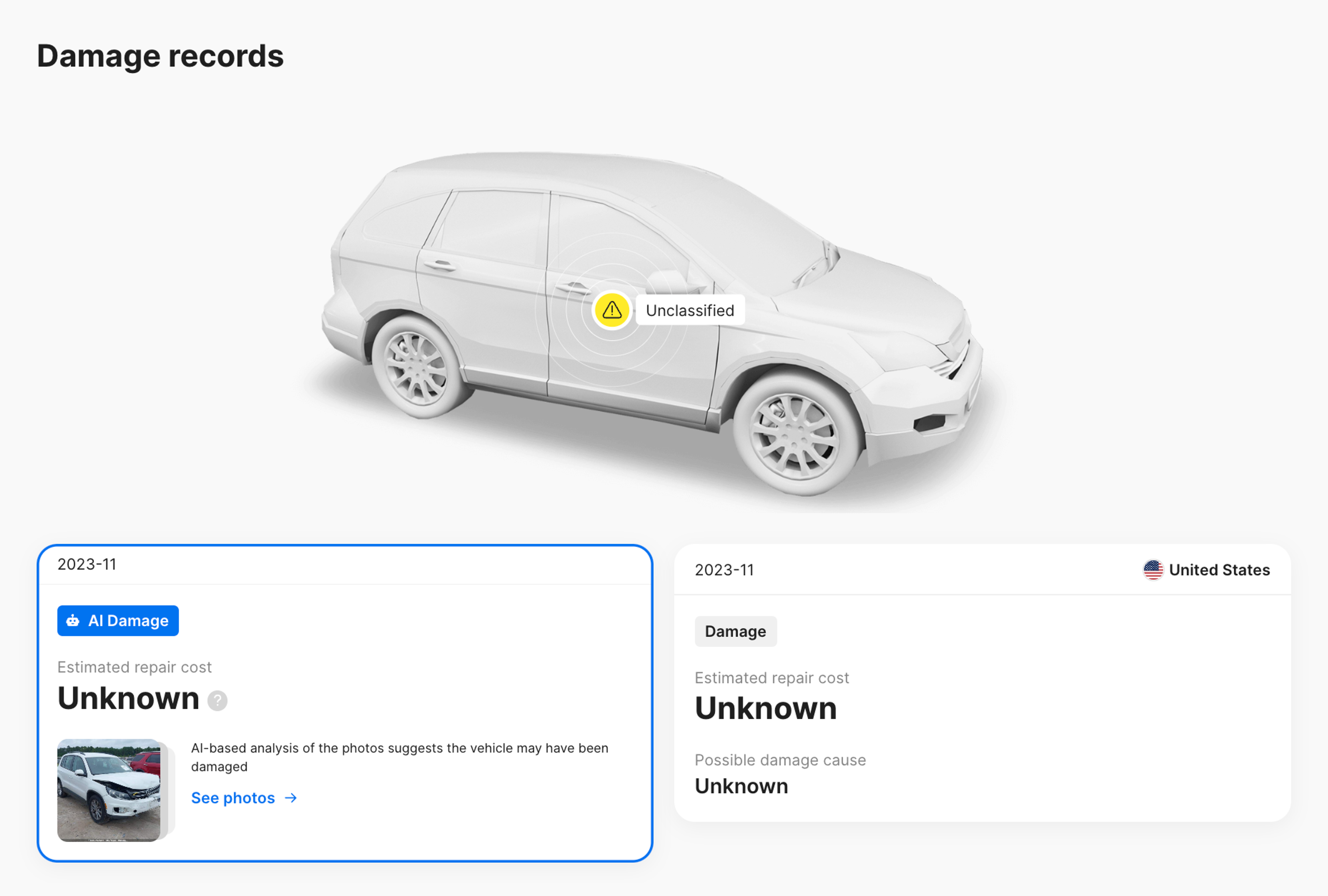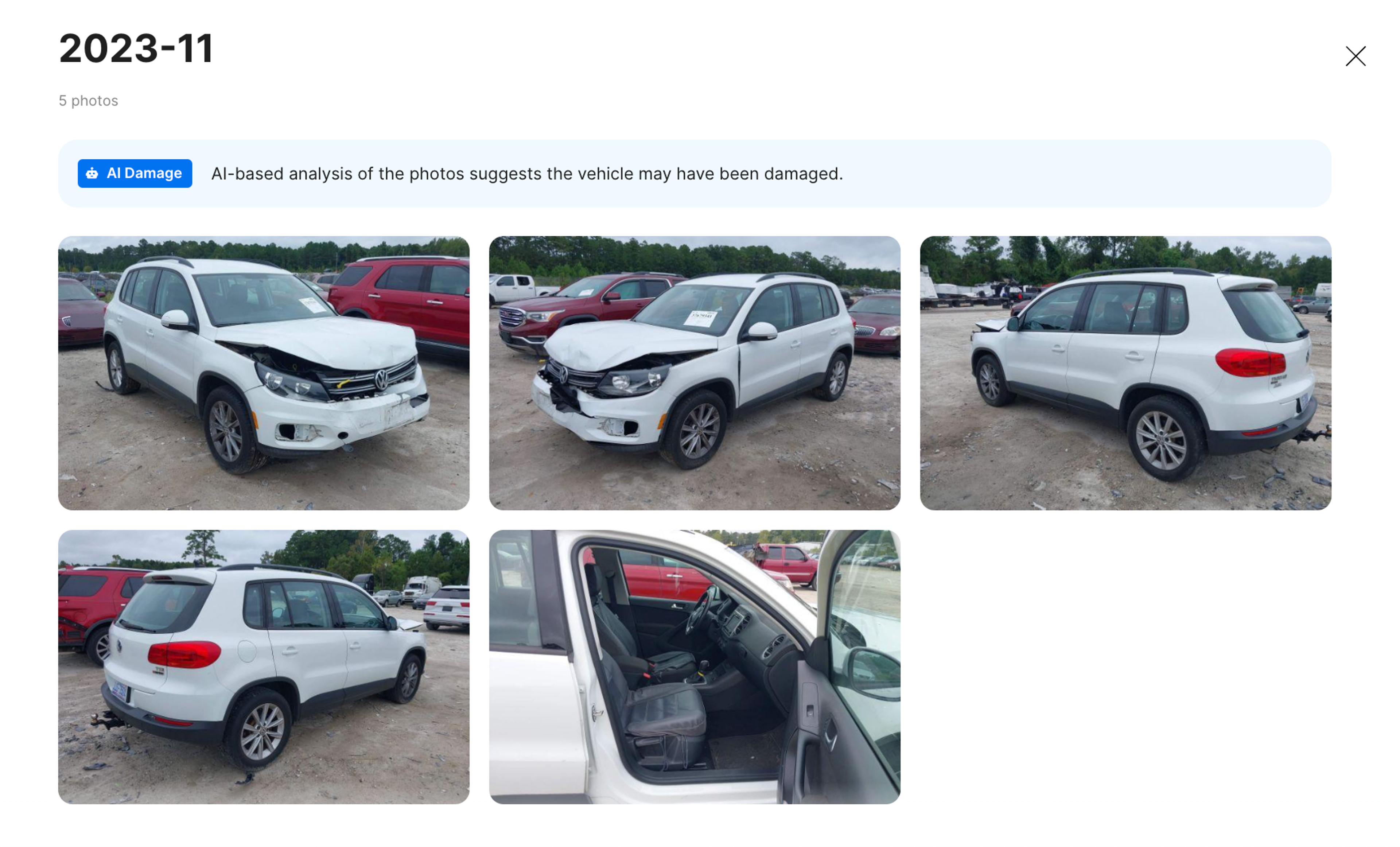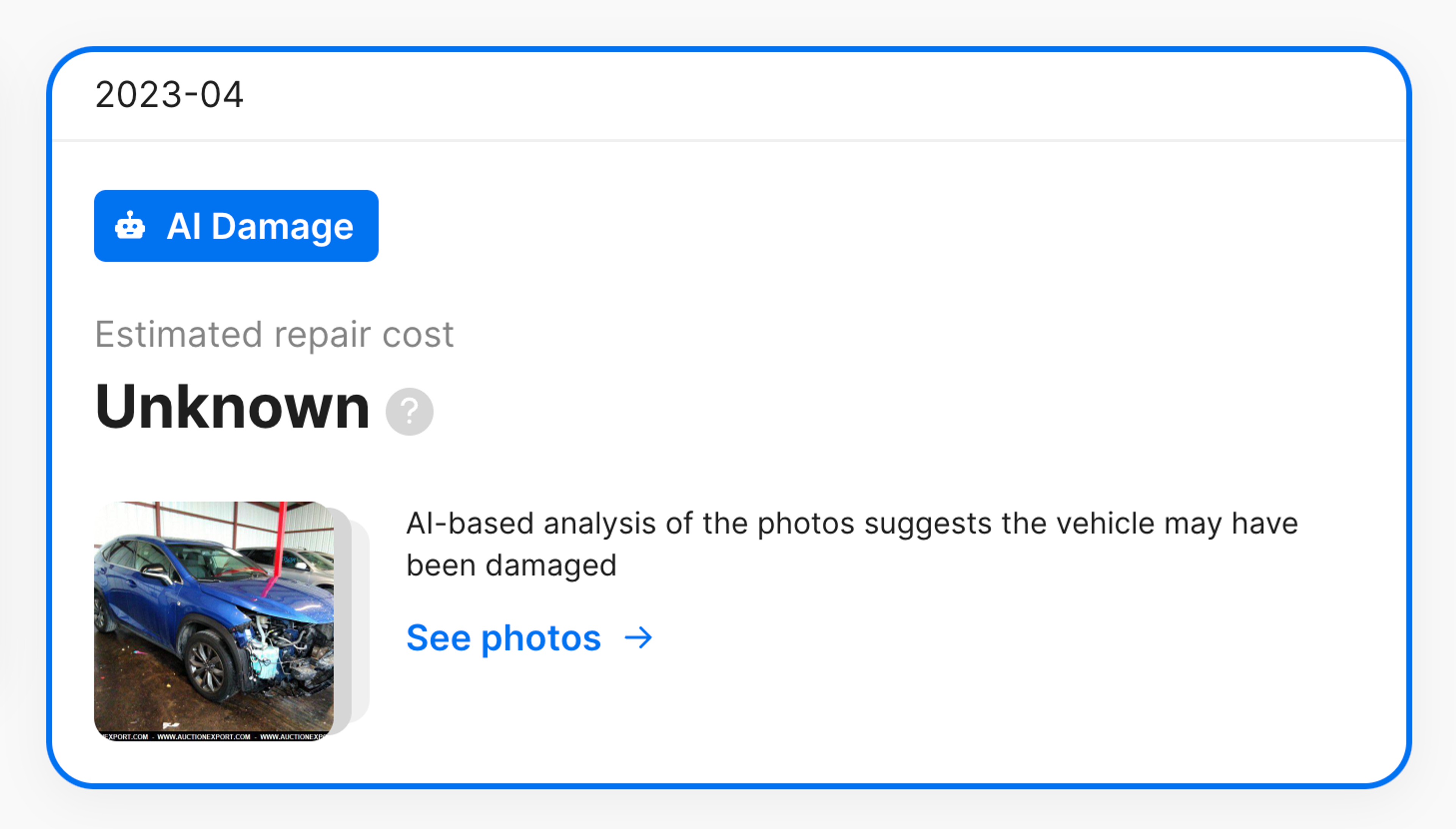Table of Contents
Our new AI damage feature can identify collisions from vehicle photos
Damage history is one of the key considerations when buying a car. Sadly, some accidents don’t appear in accessible databases, making them more difficult to learn about.
One of the ways we’re addressing this problem is through AI, which helps us identify damages from the Photo section of our vehicle history report. Even if there’s no damage record, we may now be able to spot past accidents and warn our users.

Need help buying a used car?
Enter a VIN code to learn more about any vehicle!
Introducing the AI damage feature
Our AI can now analyze the Photos section of the vehicle history report and identify whether a vehicle has been damaged in the past.

Why is this relevant?
Sometimes, we don’t have access to a damage record, but we do have photos of a vehicle with visible damages. In the past, this would not be displayed in the damage section of our report.
Enter our AI damage feature.

By analyzing vehicle photos, our AI damage feature can spot visible damages. If this happens, the record will now appear in the damage section of the report. This reduces the chances that our users will miss it – regardless of the available damage records.

A picture is worth a thousand words, goes the old saying. This is even truer with AI doing the looking, but don’t count yourself out, either.
Photos can tell you what questions you need to ask the seller before sealing the deal. So always check the Photo section in the carVertical history report for more insights.

Check your VIN
Avoid costly problems by checking a vehicle's history. Get a report instantly!
Why should you always check the vehicle for damage?
Knowing the vehicle’s damage history before buying it allows you to uncover potential weak spots and avoid bad deals. Always check the damage history to:
- Ensure your safety. Accidents, especially high-impact ones, can cause structural damage to a vehicle's frame or chassis. This damage may not always be visible but can weaken the vehicle's structure, compromising your safety on the road.
- Minimize financial risk. Buying a car with undisclosed damages may lead to expensive repairs, a lower resale value, and more difficulty to sell in general.
- Enjoy peace of mind. Knowing that your car or motorcycle is in good condition can help you feel safer and happier. It can eliminate worries about unexpected breakdowns and make you feel more confident about your decision.
Why some damage records may be absent from reports
Vehicle history reports rely on information from various reputable sources, including law enforcement databases, state registries, insurance databases, auto repair shops, connected vehicle fleets, and many more.
However, reports may sometimes lack damage records, even if the vehicle has been in an accident. Here are a few potential reasons why:
- No one reported the damage. In some cases, individuals may choose not to report an accident to the relevant authorities or insurance companies. Hence, there’s no record in the database that can be included in a vehicle history report.
- Human error. If the accident was not properly documented, it may not appear in the vehicle history report.
- Delay in reporting. It's possible that an accident was reported, but there is a delay before the data enters a database.
FAQ
What type of car damage is the most common?
In front-end collisions, the most damaged parts of cars are typically the front bumper, headlights, and grille, while rear-end collisions often damage the rear bumper, trunk, and rear quarter panels. Side collisions can affect doors and windows, with the severity of damage varying based on the situation.
Is it safe to buy a car that has been in an accident?
It mostly depends on the extent of the damage and the quality of repairs. Some cars may still have hidden damage or inadequate repairs that could compromise safety, so it’s crucial to thoroughly inspect the vehicle before buying.
What causes structural damage to a car?
Structural damage typically occurs after a severe collision. These can include high-speed collisions, rollover accidents, impacts with solid objects, and similar events.
How do you check for frame damage on a car?
To check for frame damage on a car, visually inspect the vehicle for signs such as uneven gaps between body panels, misaligned doors or windows, or visible bending or twisting of the frame. Additionally, have a professional mechanic perform a thorough inspection, as it’s not safe to drive such cars.